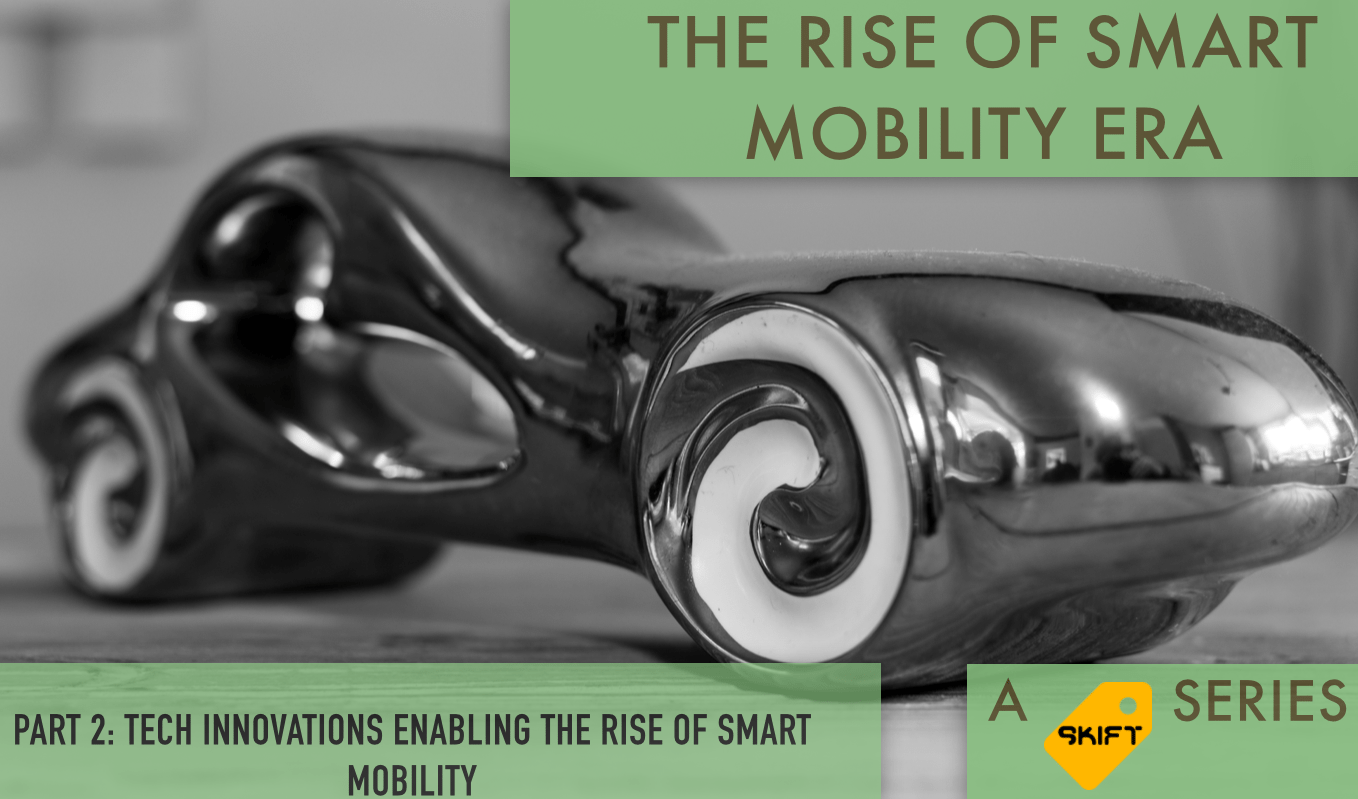The End of Travel, Part 2: Tech Innovations Behind the Rise of Smart Mobility

Skift Take
The tech, data and platform changes enabling the daily travel and transport innovations we're all benefiting from now. The mobility era is the era of digital intermediation offered through digital platforms.
Editor's Note: Last month Skift started a new three-part series on the digital and mobile transformation of transportation, the changing face of cities, and how they both have the potential to upend everything we know about travel.
The first article in this series introduced the mobility era and how new mobility providers and aggregators created new transportation products and services in cities all over the world.
The second part, along with the big 170+ slides presentation by the author, is below and well worth a deep read. You will find all articles in the coming weeks here.
This "revolution" only started a couple of years ago, with the creation of public transportation standards and the "open data" movement. Then advances in technology and computing power were leveraged more broadly to offer services such as real-time multi-mode (car, taxi, bus, train etc) mobility journey planner.
The Need for Open and Live Public Transit Data
With the advent of mobile computing, users of public transit are now demanding instant planning based on live mobility public transportation providers information. Where’s my bus? Should I take a taxi, a bike or use public transportation now?
New solutions were obviously needed beyond the basic and proprietary public transportation app and website, especially to offer a unified search solution. In order to offer such a seamless multi-mode of transportation journey planner, transportation data was needed.
Open Data Is the Fuel of Smart Mobility
Open transportation data started to be released by mobility providers, city by city, around the world.When data was not available the citizen crowd provided it to small mobility aggregators (Waze is may be the best example so far).
Data could be then shared, mapped, crunched by algorithms to propose immediate value-added predictive or prescriptive services. Value started to be generated by new entrants, with open data, in three ways: by making data available, by making data accessible and by making data valuable "in context".
Making data available means that you should first think about what data to provide, but also to fund the platform to be used and finally, what license to apply to the data.
Share-alike license, for example, requires copies or adaptations of the data to be released under the same or similar licence as the original. Of course, providing public transport data through portal and APIs is a cost, but the most difficult part today

